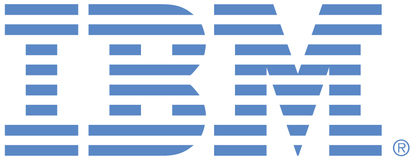These include software, protocols, and integrations that ensure the system is secure, scalable, and functional in the context of real-time financial transactions. Below are the necessary applications, programs, and systems to transform an initial cryptocurrency platform into a fully operational, real-time blockchain financial system:
1. Blockchain Platform
Blockchain Framework: First and foremost, you need a robust and secure blockchain platform that can handle decentralized financial transactions. Depending on the requirements (e.g., speed, scalability, security), you can choose between:
Ethereum (for smart contract functionality and decentralized finance applications).
Hyperledger Fabric (for enterprise-grade blockchain applications).
Solana (for high throughput and low latency).
Polkadot (for interoperability between different blockchain networks).
Application: The blockchain platform itself, which ensures secure and immutable ledger technology for tracking financial transactions, token issuance, and governance.
2. Cryptocurrency Wallets and Interfaces
Digital Wallet Software: Users must store, send, and receive cryptocurrencies. Developing or integrating cryptocurrency wallets is essential for a real-time blockchain financial system.
Wallet Software: Examples include MetaMask, Trust Wallet, or custom-built wallets integrated with your blockchain.
Web and Mobile Interfaces: Mobile apps (Android/iOS) or web interfaces that allow users to interact with the blockchain and manage their assets.
Integration: APIs that interface with blockchain platforms and provide real-time transaction capabilities.
3. Real-Time Payment Systems
Payment Gateway Integration: Implementing real-time payments through payment gateways that allow for seamless transactions between users and merchants.
Example: BitPay, CoinGate, or NOWPayments. These integrate cryptocurrency payment systems into real-world financial applications.
Micropayment Systems: For small, real-time financial exchanges, you would need to create or integrate micropayment solutions, allowing for tiny transactions to be processed instantly.
Example: Lightning Network for Bitcoin enables instant transactions with low fees.
Atomic Swap Protocols: To allow real-time exchange of assets across different blockchains without needing an intermediary, such as Bitcoin and Ethereum.
4. Smart Contracts for Automation
Smart Contract Development: These are essential for automating transactions, especially in decentralized finance (DeFi) applications. Smart contracts enable features like lending, borrowing, staking, and automated asset swaps.
Development Frameworks:
Solidity for Ethereum-based contracts.
Vyper (another Ethereum smart contract language).
Chaincode for Hyperledger-based contracts.
Real-Time Settlement: Smart contracts can be programmed to execute payments or asset transfers in real-time once predefined conditions are met.
5. Consensus Mechanisms and Validation
Consensus Algorithms: To ensure transactions are validated in real-time, a consensus mechanism is needed. Some common ones include:
Proof of Work (PoW): Bitcoin uses PoW, but it can be slower.
Proof of Stake (PoS): More energy-efficient and faster than PoW. Examples include Ethereum 2.0 and Cardano.
Delegated Proof of Stake (DPoS): More scalable and faster validation, used by networks like EOS and Tron.
Practical Byzantine Fault Tolerance (PBFT): For permissioned blockchains such as Hyperledger Fabric.
6. Blockchain Oracles
Real-World Data Integration: To make the blockchain system functional in real-time, oracles are necessary to feed real-world data into smart contracts. This is essential for things like price feeds, exchange rates, or even financial indices.
Example: Chainlink or Band Protocol provide decentralized oracles for real-time data.
Use Case: For a financial system, oracles would enable the system to react to external financial events or asset price changes in real-time.
7. Decentralized Finance (DeFi) Protocols
DeFi Protocols: If the aim is to provide real-time financial products such as lending, borrowing, trading, or yield farming, decentralized finance protocols must be integrated:
Uniswap, Aave, MakerDAO for decentralized exchanges (DEXs) and lending protocols.
Compound or Synthetix for lending and synthetic asset trading.
Yield Farming and Staking: These DeFi components allow for interest generation, collateralization, and staking for additional rewards, all integrated in real-time with blockchain systems.
8. Scalability Solutions
Layer 2 Solutions: To achieve high throughput and low latency, Layer 2 scaling solutions are essential. These solutions work on top of a blockchain to increase transaction speed and reduce costs.
Examples:
Optimistic Rollups and zk-Rollups for Ethereum.
Polygon (formerly Matic): A layer-2 solution for Ethereum.
State Channels: For instant transactions between parties off-chain (e.g., Lightning Network for Bitcoin).
Sharding: A method to split the blockchain into smaller, more manageable parts to process transactions concurrently, improving scalability (e.g., Ethereum 2.0).
9. Security and Privacy Features
Cryptographic Methods: To ensure secure real-time transactions, your system must integrate strong cryptographic methods like public/private key encryption and hash functions.
Privacy Protocols: Systems such as zk-SNARKs (zero-knowledge proofs) can be implemented for privacy-preserving financial transactions.
Auditing Tools: Blockchain-based audit systems ensure transparency and trust in the financial system. This could include tools to trace transaction histories and ensure compliance with financial regulations.
Multi-Signature Wallets: Enhances security by requiring multiple parties to sign off on transactions, ensuring added security in real-time financial systems.
10. Legal and Compliance Framework
KYC/AML Integration: For a blockchain financial system to be compliant with global financial regulations, you need to integrate Know Your Customer (KYC) and Anti-Money Laundering (AML) protocols.
Onboarding Tools: Services like Jumio, IdentityMind, or Civic can help implement KYC checks.
Regulatory Compliance: Ensuring the blockchain system adheres to the financial regulations of the jurisdiction it operates in (e.g., GDPR for data privacy in the EU or FinCEN regulations in the US).
11. User Interface (UI) and User Experience (UX)
Web/Mobile App Development: To make the blockchain financial system accessible and usable for everyday users, you'll need an intuitive front-end interface. It should allow users to interact with their wallets, execute transactions, track balances, and manage assets.
React, Vue.js for web development.
React Native for mobile apps (iOS/Android).
User Experience: Focus on a simple, clean UX/UI design that makes it easy for non-technical users to engage with the blockchain system.

